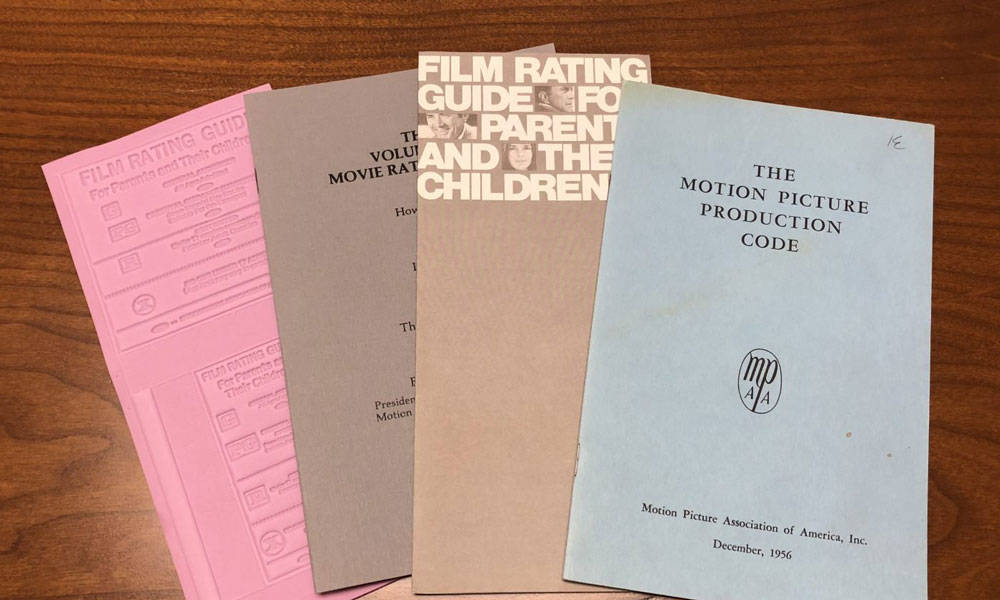
5 Fascinating Facts About MPAA’s 50-Year-Old Ratings System
The movie industry’s iconic system for rating mainstream films, used on roughly 30,000 films since its introduction five decades ago this week, is widely seen as a success, even if it does frequently court controversy. MPAA recently opened up about the system with a digital archive.
Half a century ago, the film industry had a problem—it wanted to have a way to have more freedom to tell stories while keeping in mind practical concerns, such as the need to keep explicit content away from children.
The solution to this problem was something that became perhaps the most famous association initiative of all time: The Motion Picture Association of America (MPAA) ratings system, introduced 50 years ago this week. The system, which currently has ratings that vary between G (for general audiences) and NC-17 (for not-so-general audiences), has become both a cultural bellwether and a recognizable part of the movie experience.
In honor of this major anniversary, MPAA recently released a major store of information about the program. A few fun historical facts about the system worth highlighting:
1. Before there were ratings, there was a complex self-regulatory code that limited creative output. It’s uncommon to run into a movie before the mid-1960s that has many of the touchstones of a modern R-rated film, such as violence or profanity. The reason for that was a program called the Hays Code, implemented by William Hays, the president of the Motion Picture Producers and Distributors Association, which later became MPAA, as the association’s G is for Golden retrospective report notes. Like the current ratings system, it was self-regulatory, but weaknesses in the often-rigid system led Jack Valenti, a former press secretary for President John F. Kennedy who became the head of MPAA in 1966, to work on an alternative approach that became the modern ratings system.
2. The film industry designed the system knowing it was imperfect at first. In 1968, as Valenti was making the case for the new rating system, he explained to the San Francisco Examiner that its broad goals were likely to make it fallible. “This plan is no panacea. It didn’t come down from Mt. Sinai on stone tablets,” he explained. “It’s a manmade effort, and, therefore, it is flawed. But we felt that there is no viable alternative.” Valenti, who led MPAA for 38 years, added that the idea was to emphasize the concern for children, “yet children cannot set the boundaries for motion picture creativity.” The system has responded to these imperfections: The PG rating was eventually split into PG-13 in 1984 as action blockbusters gained popularity, and the original X movie rating, which gained negative connotations due to the fact it couldn’t be trademarked, was rebranded to NC-17 in 1990.
A clip promoting some of the earliest film ratings, including GP, which was eventually replaced with PG.
3. The system required major coordination from studios, theaters, and the media. When the initial system was pitched—with starting ratings of G (general audiences), M (mature audiences), R (restricted audiences), and X (no attendees under age 16)—MPAA had to work closely with many stakeholders to roll the system out, going so far as to mail a brief film rating guide to newspapers nationwide and asking them to include it in their publication to increase awareness. “Many, but not all, publishers were receptive,” the association noted.
4. The most popular rating is … Out of the nearly 30,000 films MPAA has rated over the past 50 years, you might expect that PG or PG-13 would be the most common ratings. But you’d be wrong. In a press release, MPAA announced that the R rating was the single most common rating, with 17,202 R-rated films since 1968, compared to 1,574 films rated G, 5,578 rated PG, and 4,913 rated PG-13. The least common rating remains NC-17, with just 524 films receiving that rating equivalent in the past 50 years.
5. Despite controversy, the program is widely seen as a success by the public. If you were to ask your favorite directors about the ratings system, you’ll hear many stories about campaigns against tougher ratings than the directors thought the film deserved, perceived double standards, particularly in regard to sex and violence, and ratings that prevent a film’s target audience from even seeing the film. (There was even a documentary about this topic, which itself originally received an NC-17 rating and even integrated its campaign against that rating into the film.) Despite these controversies, the ratings system generally has strong public support, according to MPAA: Its G is for Golden report shows 84 percent of respondents agree or strongly agree that the ratings are generally accurate, while 88 percent say the descriptors are accurate.
A series of items from the digital archive for the MPAA's rating system, released this week. (Handout photo)






Comments